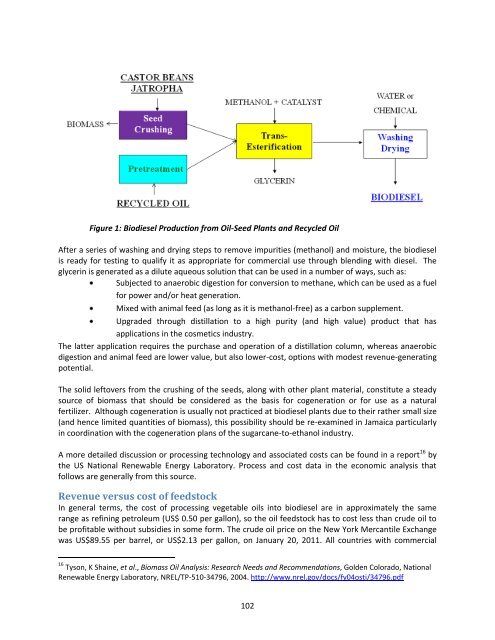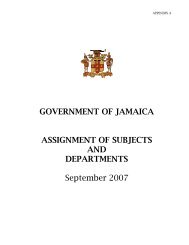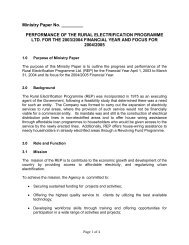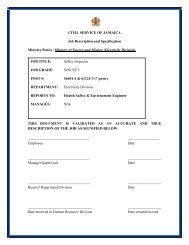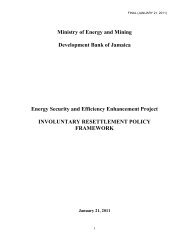Jamaica Biofuels Report - Ministry of Energy
Jamaica Biofuels Report - Ministry of Energy
Jamaica Biofuels Report - Ministry of Energy
You also want an ePaper? Increase the reach of your titles
YUMPU automatically turns print PDFs into web optimized ePapers that Google loves.
Figure 1: Biodiesel Production from Oil-Seed Plants and Recycled OilAfter a series <strong>of</strong> washing and drying steps to remove impurities (methanol) and moisture, the biodieselis ready for testing to qualify it as appropriate for commercial use through blending with diesel. Theglycerin is generated as a dilute aqueous solution that can be used in a number <strong>of</strong> ways, such as:Subjected to anaerobic digestion for conversion to methane, which can be used as a fuelfor power and/or heat generation.Mixed with animal feed (as long as it is methanol-free) as a carbon supplement.Upgraded through distillation to a high purity (and high value) product that hasapplications in the cosmetics industry.The latter application requires the purchase and operation <strong>of</strong> a distillation column, whereas anaerobicdigestion and animal feed are lower value, but also lower-cost, options with modest revenue-generatingpotential.The solid leftovers from the crushing <strong>of</strong> the seeds, along with other plant material, constitute a steadysource <strong>of</strong> biomass that should be considered as the basis for cogeneration or for use as a naturalfertilizer. Although cogeneration is usually not practiced at biodiesel plants due to their rather small size(and hence limited quantities <strong>of</strong> biomass), this possibility should be re-examined in <strong>Jamaica</strong> particularlyin coordination with the cogeneration plans <strong>of</strong> the sugarcane-to-ethanol industry.A more detailed discussion or processing technology and associated costs can be found in a report 16 bythe US National Renewable <strong>Energy</strong> Laboratory. Process and cost data in the economic analysis thatfollows are generally from this source.Revenue versus cost <strong>of</strong> feedstockIn general terms, the cost <strong>of</strong> processing vegetable oils into biodiesel are in approximately the samerange as refining petroleum (US$ 0.50 per gallon), so the oil feedstock has to cost less than crude oil tobe pr<strong>of</strong>itable without subsidies in some form. The crude oil price on the New York Mercantile Exchangewas US$89.55 per barrel, or US$2.13 per gallon, on January 20, 2011. All countries with commercial16 Tyson, K Shaine, et al., Biomass Oil Analysis: Research Needs and Recommendations, Golden Colorado, NationalRenewable <strong>Energy</strong> Laboratory, NREL/TP-510-34796, 2004. http://www.nrel.gov/docs/fy04osti/34796.pdf102


